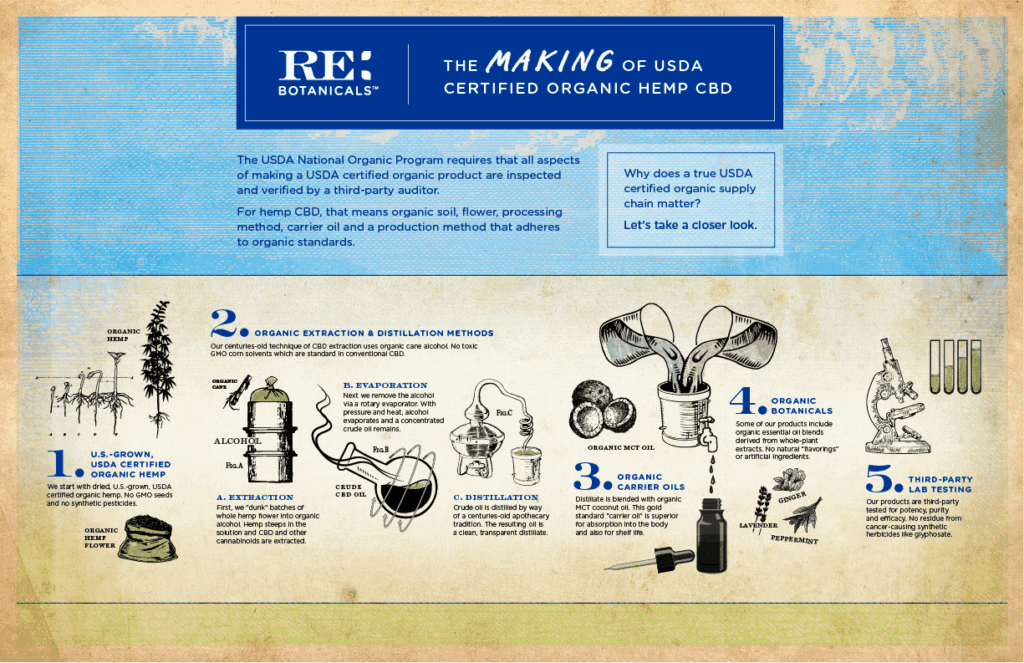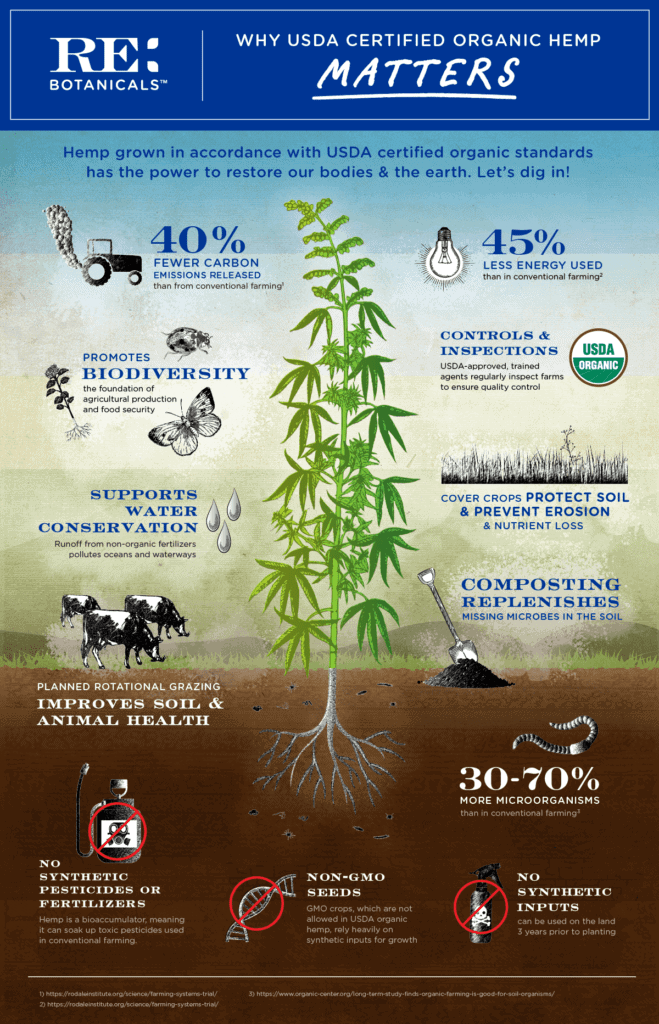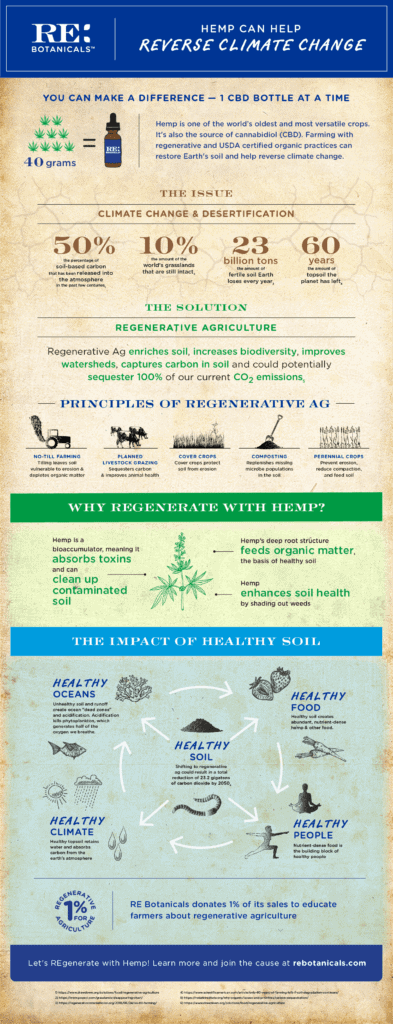USDA CERTIFIED ORGANIC HEMP MATTERS!
You’ve seen that friendly green USDA certified organic label found on products. You likely look for it when shopping for produce and groceries. Regardless of why or when you buy organic products, you have your reasons why organic matters to you. No matter how many or what the reason is, it matters. USDA certified organic matters to you, and USDA certified organic matters to us.
Make sure your hemp is USDA certified organic!
You may have noticed that many hemp brands make claims that they are organic, but the USDA organic logo is nowhere to be found on their packages. If there is no seal, there’s no deal.
When it comes to finding a hemp product you can trust, we believe there’s one logo that matters more than any other: USDA certified organic.
Read more below about how USDA certified organic hemp is important for:
USDA certified organic hemp matters for your health.
Producing USDA certified organic CBD has been non-negotiable ever since our founder and Chief Hemp Officer, John W. Roulac, had the vision to shake up the hemp CBD industry.
We don’t just believe USDA certified organic hemp is important, we believe it is vital. Vital to the health of our planet and our consumers, and the only way to grow hemp that we can confidently stand behind.
But not all hemp CBD is farmed the same, and not all hemp CBD is processed the same. The hemp in many CBD products is grown and processed conventionally with dangerous, irresponsible, and degenerative methods. Toxic GMO solvents, heavy metals, and pesticide residue—without USDA organic certification they could end up in your CBD oil without your knowledge.
To extract CBD and a spectrum of other beneficial plant compounds from hemp (hint: it’s called “full spectrum” because CBD is not the only beneficial cannabinoid extracted!), we employ an alcohol-based extraction and distillation method that’s been used for centuries. The top-of-the-line equipment in our lab may look modern, but it utilizes the same trusted technique that some historians say began as early as 2,000 B.C. to make balms, essences and tinctures. Alcohol extraction is still considered today to be the safest and cleanest method of separating oils from plants.
During the extraction process, many brands use solvents like alcohol from GMO corn or conventional sugar. We only use alcohol made from organic cane sugar—it’s a safe, gentle, and efficient solvent that’s been used in the apothecary tradition for hundreds of years.
This illustration “distills” how the whole process works, and why the measures we take to create safe and clean, USDA certified organic hemp CBD products are so important.

USDA certified organic hemp matters for soil health.
We believe that health begins in the soil, and healthy soils produce healthy crops that create healthy animals, people, and planet. All of that begins on the farm where the hemp is planted, when it’s planted, and how it’s planted.
Grown in healthy, homegrown U.S. soil at our farm in Conway, South Carolina, our hemp is 100% USDA certified organic. Planted mid-summer, hemp begins as small seedlings and matures into 4- to 6-feet-tall plants bursting with CBD and other beneficial plant compounds. Fragrant in smell and a rich green in color, at the time of harvest in late September these organic plants resemble robust little Christmas trees.
Quite simply, hemp grown in accordance with the USDA certified organic standards and practices has the power to regenerate our bodies and the earth. Ideally, all of the elements of an organic farming (planned grazing, cover crops, no synthetic pesticides, etc.) combine synergistically to create a holistic, biodiverse system that benefits the soil, the hemp, and the humans who farm and consume it. Many brands claim their hemp is organic, but where’s the proof? As we like to say, no seal, no deal.
This infographic we created explains some of the central tenets, benefits, and standards of USDA organic certification.

USDA certified organic hemp matters for planet health.
Hemp can help reverse climate change – fact. We’ll get to the nitty-gritty of how and why in just a moment, but let’s first discuss the problem at hand. The health of our planet (and its people—yeah, that’s you) depends on the health of its topsoil. Healthy topsoil is the key to almost everything. It gives us clean air and water as well as nutrient-rich food. It regulates water flow and contains microorganisms that provide the foundation for both human and plant life.
The bad news: Earth is losing topsoil at an alarming, disturbing rate. In the past hundred or so years, grasslands and prairies across the globe have desertified. Agricultural valleys—once lush and fertile—have turned to dust. Industrial agriculture, with its “take from the earth” mentality, has depleted healthy soil. Carbon and methane emissions are warming the atmosphere and in turn acidifying the oceans. Acidified oceans kill phytoplankton, and our precious phytoplankton produce over 50% of Earth’s oxygen. That’s not a good thing.
The good news: We can help reverse climate change by shifting our perspective and altering our approach to agriculture. Quite simply, one of the keys to reversing climate change is sequestering carbon from the atmosphere into our soil, and regenerative agriculture can do just that.
The better news: Hemp can play a big role in this practice.
Not all hemp has the power to do this. Sadly, the majority of CBD brands out there engage in dangerous and irresponsible agriculture practices that actually contribute to climate change.
We’re passionate about hemp and its role in regenerative agriculture. That’s why we donate 1% of our sales to nonprofits that educate farmers about it. We’ve created this infographic to explain regenerative agriculture, illustrate how hemp can play a part in it, and demonstrate how you—and the CBD that you use—can change things for the better.


